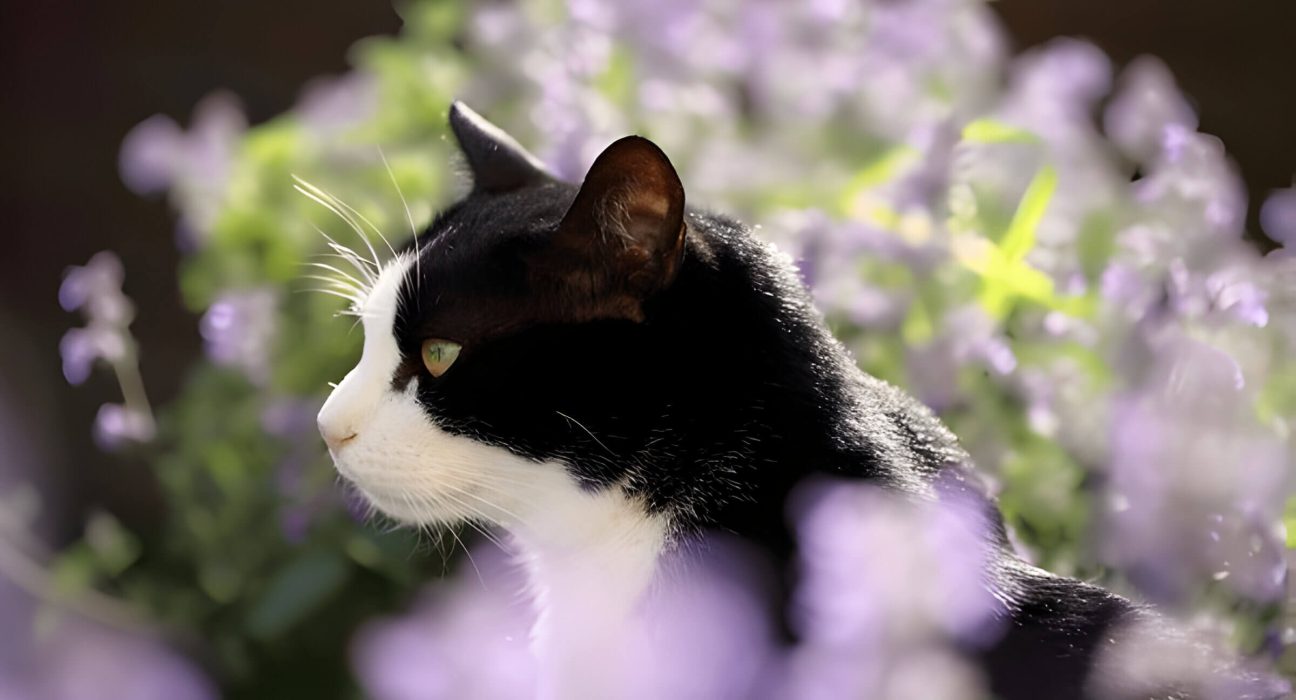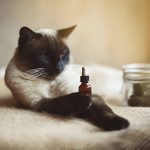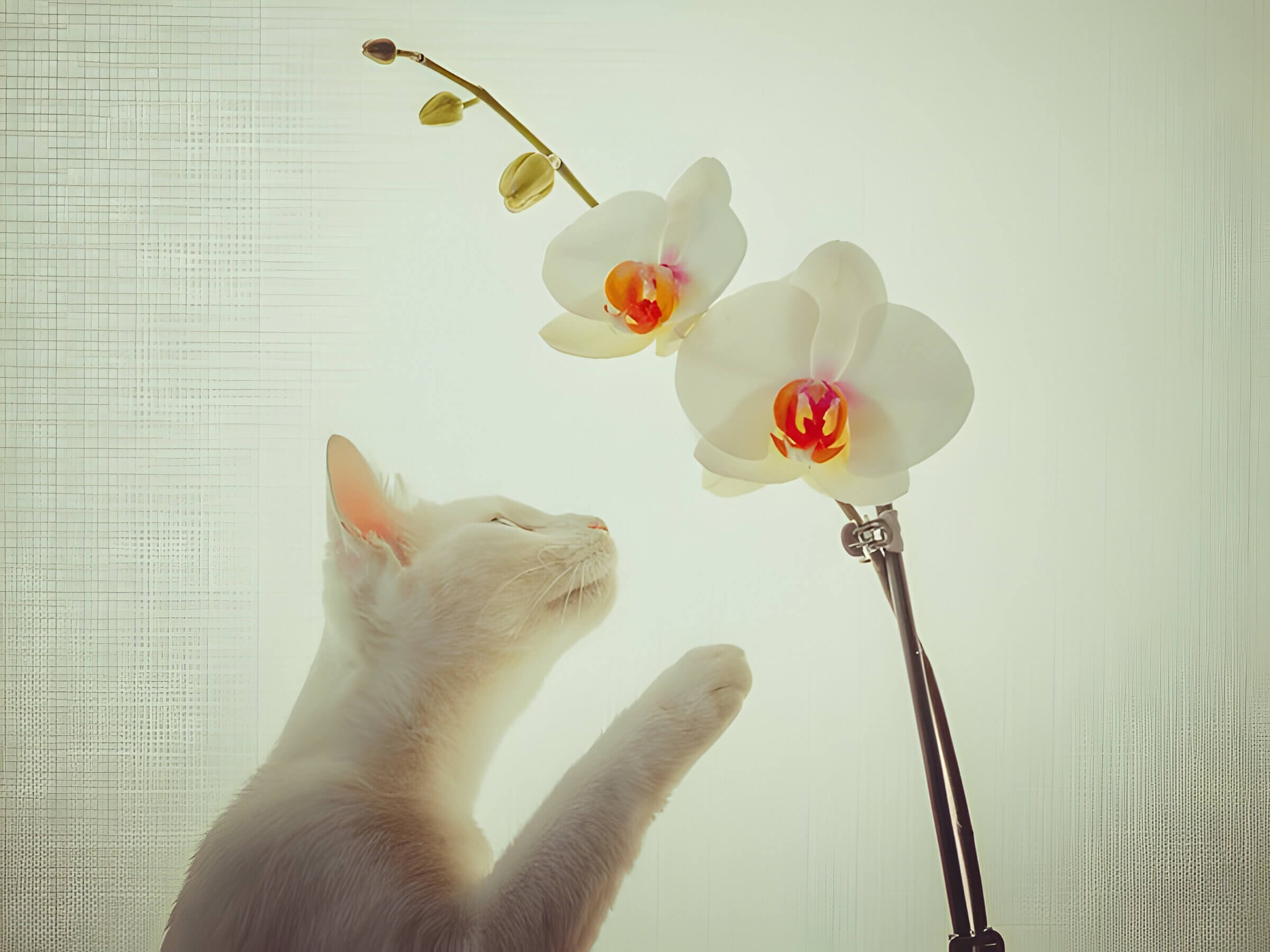Catnip’s effect on cats is intriguing, causing reactions from euphoria to relaxation. This herb’s power over felines varies, with some cats unaffected. We’ll explore the science behind this unique interaction and its potential benefits for cats.
What Exactly is Catnip?
Catnip, scientifically known as Nepeta cataria, is a fascinating herb that has captivated feline enthusiasts for centuries. This perennial plant, belonging to the mint family, is renowned for its peculiar effect on cats. Native to Europe and Asia, catnip has naturalized in many parts of North America, thriving in various climates.
The allure of catnip lies in its active compound, nepetalactone, which acts as a powerful herbal stimulant for cats. When cats encounter this cat-safe herb, they may exhibit a range of behaviors, from increased playfulness and rolling around to a state of relaxed bliss. Interestingly, not all cats respond to catnip, as sensitivity to the plant is hereditary and affects roughly 50-70% of cats.
Catnip’s feline attraction isn’t limited to domestic cats; many wild feline species also show a fondness for this herb. Despite its potent effect on cats, catnip is harmless and non-addictive, making it a popular choice for cat toys and treats. For humans, catnip has been used in traditional medicine and can be brewed into a calming tea.
Understanding the unique properties of catnip can help cat owners provide safe, natural enrichment for their feline companions, enhancing their pets’ environmental stimulation and overall well-being.
The Science Behind the Euphoria (How Catnip Works on a Cat’s Brain)
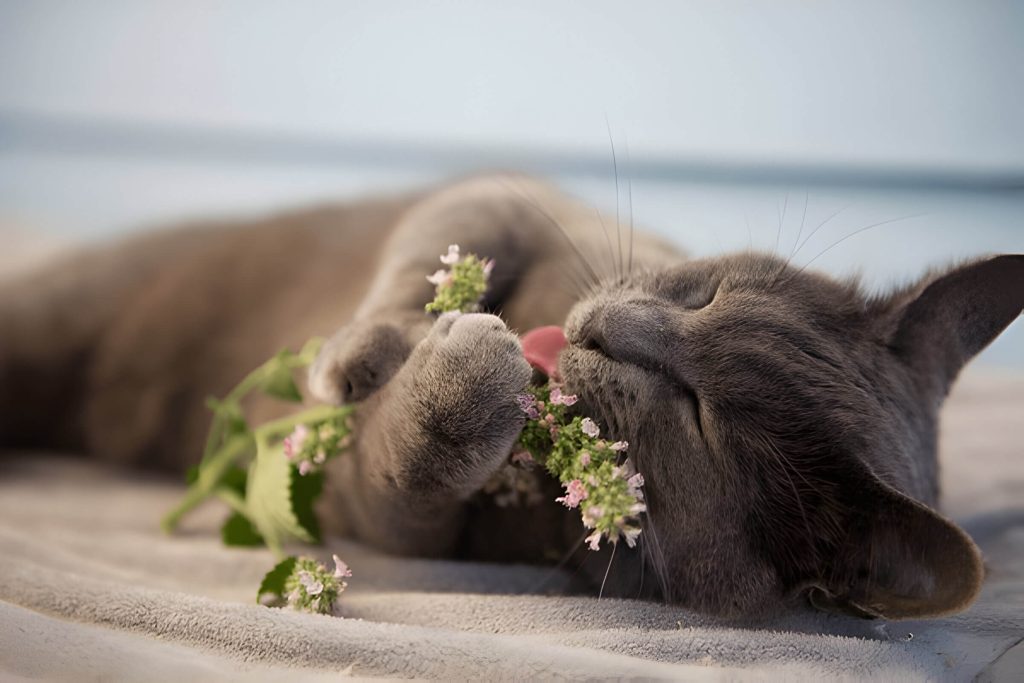
Catnip, scientifically known as Nepeta cataria, contains a compound called nepetalactone that triggers a unique neurological response in cats. When a feline encounters catnip, the nepetalactone molecules bind to their olfactory receptors, stimulating sensory neurons that send signals to various parts of the brain.
This interaction primarily affects the olfactory bulb, amygdala, and hypothalamus, areas responsible for processing scents, emotions, and behavioral responses. The stimulation of these regions results in the characteristic catnip-induced behaviors, such as rolling, rubbing, and increased playfulness.
Interestingly, the cat’s response to catnip is hereditary, with approximately 50-70% of cats showing sensitivity to the plant. The effect is not limited to domestic cats; many wild feline species also exhibit similar reactions to nepetalactone.
While the euphoric state induced by catnip is intense, it’s short-lived, typically lasting 10-15 minutes. After this period, cats experience a temporary immunity to catnip’s effects, usually requiring about an hour before they can respond again. This natural cycle prevents overstimulation and ensures that cats can safely enjoy the sensory experience of catnip without adverse effects.
Why Some Felines Are Immune to Catnip’s Charms
While many cat owners delight in watching their feline friends go wild over catnip, not all cats experience this euphoric reaction. The sensitivity to catnip is actually a genetic predisposition, meaning some cats are simply born without the ability to respond to this aromatic herb. Research suggests that approximately 50-70% of cats are affected by catnip, leaving a significant portion of the feline population immune to its charms.
This genetic variation is just one example of feline individuality, highlighting how each cat possesses a unique personality and set of traits. Catnip sensitivity is believed to be an autosomal dominant trait, which means that if a cat inherits the gene from either parent, it will likely respond to catnip. However, even among cats with the genetic predisposition, the intensity of their reaction can vary greatly.
It’s important for cat owners to understand that a lack of response to catnip doesn’t indicate any health issues or personality flaws in their pets. Instead, it’s simply another facet of their cat’s unique genetic makeup. For those whose cats don’t react to catnip, there are alternative herbs like valerian root or silver vine that might elicit a similar response, allowing all cat owners to potentially enjoy the amusing spectacle of their pets in a state of herbal-induced bliss.
What Does Your Cat Feel?
When cats encounter catnip, they often exhibit a range of intriguing behaviors that can be both amusing and fascinating to observe. The active compound in catnip, nepetalactone, triggers a euphoric response in many felines, leading to a temporary “high” that typically lasts about 10 to 15 minutes.
During this catnip-induced state, cats may display increased playfulness, rolling around on the ground, and rubbing their faces and bodies against the plant or catnip-infused toys. This behavior is often accompanied by purring, drooling, and sometimes even vocalizations of contentment.
It’s important to note that not all cats react to catnip, as sensitivity to the plant is hereditary. Approximately 50-70% of cats respond to catnip, with kittens and senior cats generally being less affected.
For cats that do respond, the catnip experience can be a form of natural relaxation and stress relief. After the initial burst of energy and euphoria, many cats enter a state of calm and contentment. This makes catnip a useful tool for cat owners looking to provide environmental enrichment and promote overall feline well-being.
While the effects of catnip are generally harmless and non-addictive, it’s always best to offer it in moderation to ensure your cat continues to enjoy the experience without developing tolerance or losing interest.
Potential Benefits of Catnip for Your Feline Friend
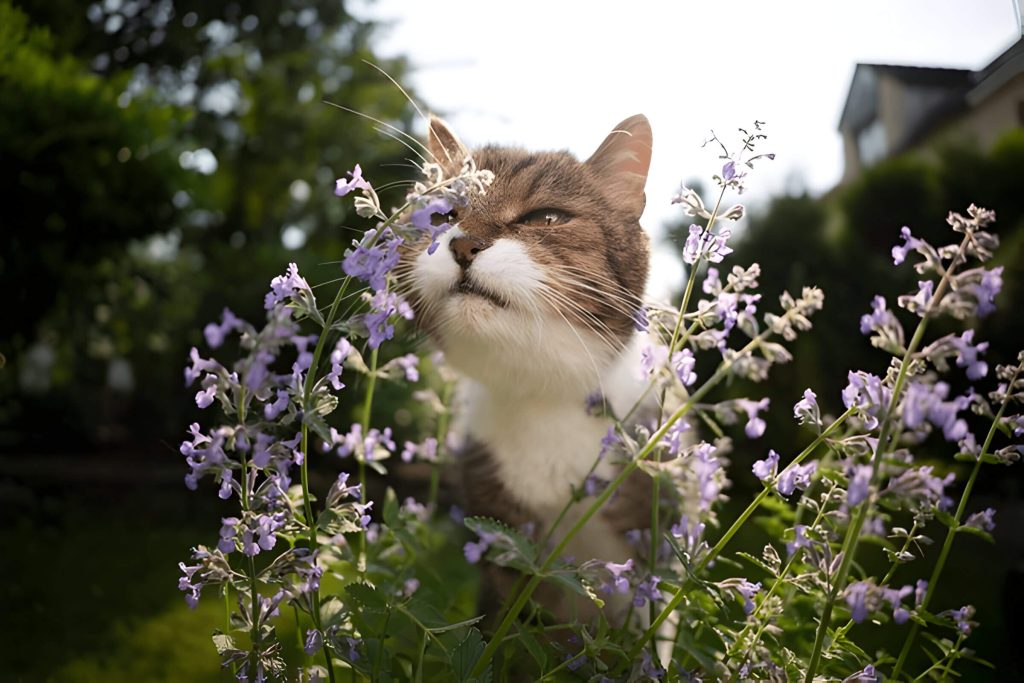
Catnip, while often associated with feline entertainment, offers more than just a momentary high for your furry companion. This natural herb can provide several potential benefits for your cat’s overall well-being. One of the primary advantages is stress relief; the calming effect of catnip can help anxious cats relax in stressful situations, such as during travel or visits to the veterinarian.
Environmental enrichment is another significant benefit of catnip. By introducing this stimulating herb into your cat’s surroundings, you can create a more engaging and interesting living space. This is particularly important for indoor cats who may lack the variety of stimuli found in outdoor environments.
Catnip can also serve as an excellent exercise motivation tool. The burst of energy cats often experience after exposure to catnip can encourage physical activity, helping to maintain a healthy weight and promote cardiovascular health. This natural remedy can be especially useful for sedentary or overweight cats who need extra encouragement to move.
As a natural alternative to synthetic products, catnip can be a safe addition to your cat’s routine. However, it’s essential to remember that while most cats respond positively to catnip, individual reactions may vary. Always introduce new elements to your cat’s environment gradually and under supervision to ensure the best outcome for your feline friend’s well-being.
The Joy Catnip Brings to Our Feline Companions
The allure of catnip for our feline friends remains a fascinating aspect of cat behavior. While not all cats respond to catnip, those that do experience a temporary state of euphoria and heightened playfulness. This reaction is due to the compound nepetalactone found in catnip, which triggers sensory neurons in cats’ nasal tissues.
Understanding why cats love catnip not only satisfies our curiosity but also provides us with a safe and natural way to enrich our pets’ lives. Whether used as a training aid, stress reliever, or simply a source of entertainment, catnip offers numerous benefits for our feline companions.
As responsible pet owners, we can embrace the joy that catnip brings to our cats’ lives. By offering this herb in various forms – such as toys, sprays, or fresh plants – we can provide stimulating experiences that cater to our cats’ natural instincts and behaviors.



